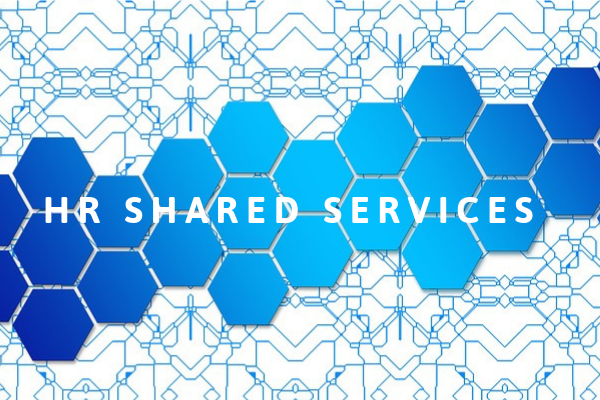
Would you like to start a conversation with other industry leaders to brainstorm a challenge or to just know more on a particular topic?
Engage in online discussions with your Peers
Start NowAlcon is the global leader in eye care, dedicated to helping people see brilliantly. With a 75-year heritage, the company has complementary businesses in surgical and vision care. With presence in over 60 countries and serving patients in more than 140 countries, Alcon has the most comprehensive array of eye care offerings in the industry, with products that can treat the eye at every stage of life.
The Landscape: Valuable Relationships and Independent Governance
After an eight-year relationship, Alcon spun off from Novartis and made its debut as a publicly traded company, listed on the New York and Swiss stock exchanges. While Alcon gained the agility of an independent company with a firm global leadership position in MedTech eye care, the company also had 74 global locales to steer from Novartis to the Alcon brand. Novartis and Alcon created a Transition Services Agreement (TSA) that would continue using Novartis’ shared services support for Alcon’s corporate HR functions for two years following the spinoff.
As a part of the spinoff, Alcon Global Services (AGS) was established. AGS selected four locations worldwide with Bangalore, India, as its global centre.
The Global HR Operations team has ownership and accountability for Alcon’s people-related systems. In collaboration with AGS’ Transition and Transformation teams, the Global HR Operations took the lead to transition all people-related systems and processes for 24,000 associates located across 60+ countries. Within a timeframe of 24 months, it had to embark on this new journey into Alcon’s future with a series of sprints, racing to reach the brief two-year finish line.
Creating the Off-boarding Roadmap
The TSA contained specific milestones for Alcon to gradually take over the full ownership of its corporate functions. To honour the deadline and exit the TSA on time, Alcon’s Global HR Operations team needed to:
- Select and configure a single global Human Capital Management (HCM) system

In collaboration with AGS’ Transition and Transformation teams, the Global HR Operations took the lead to transition all people-related systems and processes for 24,000 associates located across 60+ countries.

- Select and configure a single global Human Capital Management (HCM) system
- Transition from Novartis or select new payroll vendors and processes
- Transition from Novartis or determine new timekeeping systems and processes
- Set up a global HR Shared Services function to be based in AGS centers
Early in the planning process, the project leadership recognized that to be successful, they would need to:
- ✓ Streamline and simplify HR processes that can be applied globally, while factoring local compliance and regulatory requirements
- ✓ Implement "direct access" to put the ownership and accountability for people-related processes in the hands of those closest to them – managers of people – at all levels, from front-line supervisors to senior leadership
- ✓ Transfer knowledge from the HR professionals that were responsible for executing processes under Novartis. Some were Novartis associates while others were in-country Alcon HR associates
The team recognized the primary upfront challenges:
- A 24-month timeframe to account for the regulatory and compliance needs of 70+ countries
- Meeting end-users in local languages: English plus 13 additional languages
- Transitioning out of Novartis systems in other areas of Alcon that are intertwined with HR such as Finance and IT
- Scaling people-related processes through direct access for people managers by shifting to a global HR Shared Services model that would be a significant change for the organization, including for the HR organization
Outlining what needed to be done and recognizing the challenges helped the project team select the necessary technology, organize existing and necessary resources, develop an overall project approach, and agree to strong guiding principles to keep the transition on track.
- A. Designing the Roadmap
Each part of the Global HR Operations effort, referred to as pillars, had slightly different but heavily coordinated approach to accomplishing the work.
- Human Capital Management (HCM) System
With the technology selected and the team almost in place, Alcon Global HR Ops hosted a Global Design Workshop to establish common, global processes. This type of workshop is part of the HCM Development Methodology that helps HR teams from around the globe and across the sub-functions come together to provide input on how business processes will work in a regular HCM world.
After the Global Design Workshop, the team held localization sessions to further refine the nuances in the HCM configuration to account for each country’s regulatory and compliance needs.
In the post-localization sessions, the project team and in-country HR professionals moved through the remaining steps in the HCM development methodology, including integration setup, migration, and extensive testing.
- Payroll
The first step in the payroll pillar was to analyze each country’s current payroll solution. Based on the analysis, there were three options:
-
A few countries had preexisting “Alcon Only” payroll providers where the solution could be transitioned to Alcon. This was the most desirable and least complex option.
-
Most of the countries had an existing payroll provider. Alcon associates needed to be segmented from the current Novartis payroll provider and then the solution could be transitioned to Alcon.
-
Due to the complexity of the existing solution or the use of an in-house custom payroll solution, nine countries needed to implement an entirely new payroll solution. This was the most complex option.
All of these options had to be integrated with the HCM system and, if required, a timekeeping system. Multiple rounds of testing were completed successfully regardless of the option.
-
- Timekeeping
Like payroll, the timekeeping project team started with an analysis of each country’s existing timekeeping solution. When possible, the existing solution was transitioned to Alcon. In the case of eight countries, a third-party system was implemented, integrated with the HCM and payroll solutions, and tested extensively. Special systems were also implemented to meet country-specific requirements, such as in Germany.
- HR Shared Services
The Alcon Global Services (AGS) team has the oversight of a functionally led model, meaning that teams remain a part of their respective functions such as HR, Finance, or IT. This global support approach represented a shift from a local/regional approach, where managers and associates could, in many instances, walk down the hall to ask for help before opening a formal ticket, to a global support model where managers and associates would need to open cases in the Case Management Tool (CMT) to get help.
The HR Shared Services team partnered with AGS’ Talent Acquisition team to hire for each location. As the new hires onboarded, the Novartis and Alcon teams coordinated knowledge transfer to help HR Shared Services prepare to support the Alcon organization from a historical perspective.
While Alcon’s HR systems and processes were underway, the team developed Standard Operating Procedures of how processes would work to fit the new technology landscape. The learning continued in real time as the HCM, payroll, and timekeeping systems went live. HR Shared Services continues to add to this knowledge even today to continuously improve the ways of working.
- Human Capital Management (HCM) System
- B. Preparing the Organization
While considering the tight timeframe of 24 months, the huge scale of 70+ countries, and a gamut of varying pain points, the Global HR Operations createda “fit for purpose” approach. This meant, while some processes would be streamlined and simplified through the transition, other processes would need to be transformed post-go live
To help communicate the transition and all the upcoming changes, ranging from a shift to direct access to the details of how to use the specific systems, the team developed a robust change and communication strategy. The change activities included:
- interacting with leaders about direct access and what this meant for their roles,
- focus group discussions with select people managers to test the system, and
- technology tours with an emphasis on the support tools and resources available
Communication was real-time and tailored by audience.
- C. Navigating the Waves
Segmenting the countries by region with considerations for complexity, including regulatory and compliance needs, and primary languages, was key to project management. The go-live strategy paced the rollout into four waves, starting with a small initial implementation to glean early learnings to apply to future waves. The first wave countries consisted of two types of work environments: office-based locations and manufacturing locations. They were all English-speaking countries
Each wave included:
- ✓ The launch of the HCM
- ✓ Moved to Alcon-led payroll vendors and processes
- ✓ Transitioned or started new timekeeping systems
- ✓ Shifted to Alcon’s global HR Shared Services team for support
The waves were organized in an overlapping pattern, where before one wave went live, the next wave would already be underway with localization sessions.
- D. Guiding Principles: DRIVE
With the move to new systems there was an opportunity to examine processes across Alcon, to keep their focus, the team landed on a set of guiding principles centered around the acronym DRIVE:
- Design for the future workforce
- Reinforce simplicity and consistency
- Iterate and incorporate new learnings
- Value the process, then technology
- Embrace the challenge as a team
Whenever the team wandered off the critical path, which was often, they would revisit the DRIVE principle to stay focused.
Unexpected Visitors: COVID-19 and a Southern U.S. Blizzard
In March 2020, as the team was supporting the Wave 1 launch and preparing for the Wave 2 implementation, the COVID-19 pandemic brought additional complexity. During the Wave 1 implementation, the team gained valuable experience working with people on ground, but with COVID-19, Alcon had to roll out the remaining three waves while working remotely, as a way to maintain strong partnerships with HR teams around the world without being able to travel, the project team members adjusted their working time to accommodate local time zones.
In February 2021, an unusual blizzard hit the southern portion of the United States, including Texas, as the Wave 4 implementation went live across 42 countries including Europe, the Middle East, and Africa. The project team members, mostly in Texas, had to get creative to find power sources and internet connections as they were determined to support their business on the go live.
The project team’s transformation focus was critical as these events occurred. In fact, the team transitioned Waves 2 through 4 during the pandemic, on time, and without the need to extend the TSA.
Keys to Success
In hindsight, the transition and setup of a professionally run, large scale, global HR operations which was all the more complex due to an identity separation tough working conditions was probably made possible due to a few critical factors that helped. Four of the top success factors were:
- A "Dream Team." Having an agile group of internal and external resources that acted as one team with a common goal was clearly the most critical factor for the success of the project
- A "fit for purpose" approach. A project of this magnitude waslike using a new muscle, bumps and pains points were inevitable. On each issue, the team went deep into developing deliverables. With the project’s constraints, “fit for purpose” was the sweet spot, it allowed the team to move ahead while acknowledging that the systems and processes can be improved later.
- Significant presence of executive leadership, including on the steering committee. The executive leadership’s involvement assured the team and increased their confidence.
- The Change and Communications Strategy. Streamlining and simplifying HR processes globally with localization, coupled with a move to provide direct access for people managers, demanded a robust change and communication approach to carry the organization along prior to, at, and post the implementation

By selecting and coalescing an experienced team and developing guiding principles to help formulate an approach that met the necessary milestones, the team was able to exit the TSA on time and execute a successful transition.

- Significant presence of executive leadership, including on the steering committee. The executive leadership’s involvement assured the team and increased their confidence.
- The Change and Communications Strategy. Streamlining and simplifying HR processes globally with localization, coupled with a move to provide direct access for people managers, demanded a robust change and communication approach to carry the organization along prior to, at, and post the implementation
At the project’s onset, Alcon HR Operations compared the undertaking of this project to “moving mountains.” By selecting and coalescing an experienced team and developing guiding principles to help formulate an approach that met the necessary milestones, the team was able to exit the TSA on time and execute a successful transition. In just 24 months, the team built a strong foundation to continuously strive for improved and value-added functionalities.
ABOUT THE AUTHOR

Deena Rembert Neason is Vice President & Head, Global HR Operations at Alcon. She is a strategic HR Operations leader with more than 26 years of professional experience. Beginning her career at International Paper, Deena went on to work for global leaders Pitney Bowes and Keurig Dr Pepper before joining Alcon in 2018, just in time to build the company’s Global HR Operations.
Deena’s in-depth experience in leading complex HR operations in both domestic and global markets are critical in her ability to set targeted HR operational agendas for significant and complex transitions, with the vision to carry operations beyond the transitional stage. Her focus on developing a strategic-driven approach has resulted in positive metrics for her companies while fostering confidence in the human capital she oversees





